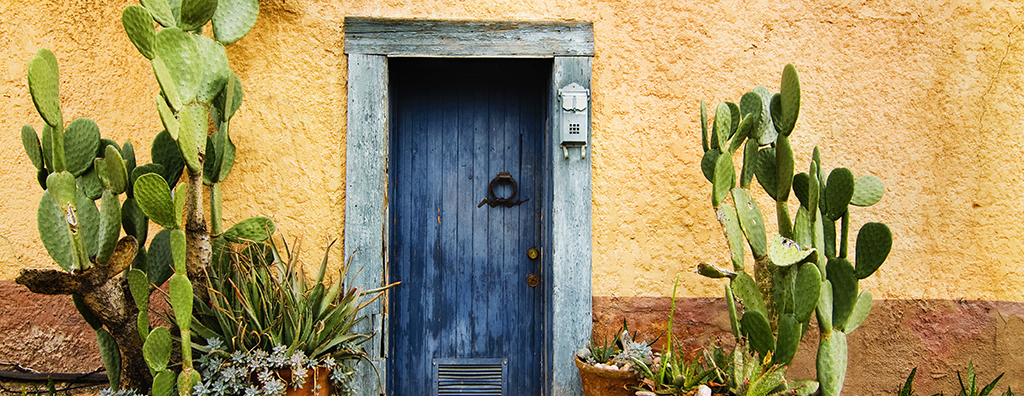
Making scents of a changing world

People in the emerging markets of Latin America, Asia and the Middle East are increasingly able to buy fragranced products for themselves and their homes.
As a supplier of 27% of all fragrance for consumer products in these regions, Givaudan has developed deep insights into what they are thinking, feeling and demanding. By reporting these findings back to our fragrance development teams, we know how to create scent experiences for people all around the world will love.
Brazil, the melting pot of Latin America
With USD 300 billion spent on infrastructure for the 2014 Football World Cup, Brazil has enjoyed a huge period of growth and is currently one of the fastest growing markets in Latin America. Its population has more than doubled since the 96 million recorded in the 1970s and with its European, African and American Indian ancestry, it continues to be a huge genetic melting pot, with every conceivable skin tone, hair type and body shape – making it the biggest market in the world for fragrance and the second largest for hair care products. Last year, Brazilian companies exported USD 783 million of cosmetics, toiletries and fragrances – a growth of 18% since 2009.
Hair care is crucial
For most Brazilian women, their hair is their crowning glory. According to Euromonitor, 20% of Brazil’s cosmetics and toiletries spend goes on hair care and 20% of global hair care growth in 2013 came from Brazil. Brazilian women devote much attention to their hair, treating it carefully with conditioner and leave-in products targeting specific hair conditions. Conscious that frequent washing may strip natural hair oils, many Brazilian women will use a post-shampoo as well as a treatment conditioner. When looking at fragrance for shampoos, Brazilian women tend to go for long-lasting floral, fruity notes.
Bar soap is very popular here. There are many options, ranging from day-to-day products those considered as gift items. Although a mature market, there are many new toilet soap variants and product lines launched each year and fragrance plays a big role when it comes to choosing which one to buy. Many favour rich, sensuous notes over fresh functional ones as people want a pleasurable shower experience.
Brazilians love perfume and look for diverse fragrance experiences, so several scent territories can be found living together in the same shelf and bathroom.
Fine Fragrances: keep it fresh and fruity
Import tax on fragrance is high, so just 7% of Brazilian fragrance-spend goes on premium fragrances, which is far below the global average of 58%, but that doesn’t stop Brazilians from loving fragrance. In our 2013 study, female respondents in Brazil and Mexico told us that they found fruity scents sophisticated and remarkable. Male respondents veered towards modern, fresh and intense scents with a sensual comfortable appeal. We see a trend for fruity floral fragrances combining freshness and creaminess to connote comfort, followed by sensual oriental notes. Brazilian women generally prefer more sensual, daring fine fragrances to fresh clean ones, which are only seen in splash colognes.
A welcome reception for door-to-door sellers
Brazil’s huge expanse means that shopping and product distribution can be difficult. Door-to-door sales bring national and international brands to many Brazilian consumers and have embedded a huge range of products into their beauty rituals. Independent vendors also go door-to-door in small vans, selling un-branded detergents, fabric conditioners and all-purpose cleaners. Products may be basic, but there is a choice of fragrance; lavender, soft rose or fennel, are both familiar and popular.
Laundry innovation is changing habits
Powder detergents are still the main format in Brazil but, with increasing demand for convenience, the market for liquids is growing and may soon be ready for tablets. As the market gets more sophisticated, stain removal is evolving from a scrub with a laundry bar to the use of stain removal additives. Value for money, performance and fragrance are all very important factors in choosing products.
Fragrances have evolved from functional to experiential outdoor notes with long-lasting freshness proving popular. There are many huge local brands with iconic fragrances that are strongly associated with laundry freshness. For the scent-seeking Brazilians, fabric softener is a prime fragrance carrier. Ready to use, diluted softener liquids are most popular but there is a noticeable growth in concentrated product formats and with their love of fragrance new technologies that deliver will be welcome.
China, nature reigns supreme
People in Beijing, Shanghai, Hong Kong and Guangzhou and inland rural China are united in a preference for fragrances that are understated and subtle.

The second largest luxury consuming market in the world, and growing, China leads the world not only in the luxury segment, but is also the world’s largest market for hair care and laundry cleaners by volume. (Source: Euromonitor)
The growth of e-commerce has been dramatic with consumers purchasing products online through sites like Taobao.com. In 2013, China surpassed the US market as the single largest online retail market globally.
Fragrance adoption through consumer products
Historically, functional fragrances like Florida Water and Tiger Balm were preferred for personal scenting. Today advertising is driving fine fragrance sales to the new – and booming – aspirational middle classes in Shanghai and Beijing. As a result, personal and homecare products are enjoying a rapid yearly growth rate at 7.5% and 8.1% respectively from 2008 to 2013. (Source: Euromonitor).
Fresh and understated scents rule
Floral and citrus families are liked in China – being fresh, natural and pleasantly sweet. Light, unobtrusive scents reflect Chinese concerns about fragrance being too intrusive, which is not acceptable except when at work, on formal occasions or in the presence of Western customers.
Homes with a sunshine smell
A desire for fresh, clean fragrances is carried into home care products. Low city air quality means people worry about pollution and love ‘well circulated fresh air’ smells.
Fresh morning air, sunshine and garden smells are the most popular for the home. The use of eau de cologne has a long heritage in China due to its cooling and insect-repelling properties and natural ingredients.
Indoors, most people walk barefoot, so floor cleanliness is a priority and are mopped daily. Products used must smell of nothing but fresh, well-circulated air.
Lemon fresh laundry
Laundry, as ever, is all about cleanliness and freshness. Floral fruity scents with a natural and clean feeling are favoured but, again, the most desired scent is ‘sunshine freshness’. This is due to the belief that sunshine kills germs, making sun-dried laundry the ultimate fresh, clean experience. Traditional hand washing is still the most common laundering method, but washing machines are increasingly present in city homes. Liquid detergent use is increasing. In our 2013 study, 87% of urban Chinese consumers told us they usually used liquid detergent, followed by 60% using powder and 44% preferring bar soap. They also told us that fragrance is very important to them when purchasing new liquid detergent products.
Mexico, the demanding ‘Scent-Seekers’
A country of vivid colours and intense flavours; the high altitude and low humidity of large areas affects the way perfume behaves here – which, combined with the scent-loving nature of the Mexican consumer, makes this a particularly demanding market, when it comes to fragrance performance. The 15th largest economy by GDP, there are huge opportunities for product innovation due to the very strong youth culture (46% of Mexico’s population is under 24).

Loving fragrances that linger
Strong sensory experiences are loved by Mexican consumers, who expect to be able to smell the fragrance of their fabric conditioner, perfume or shampoo several days after washing. In fabric softeners alone, perfume content is three times higher than in other countries.
Mexico’s widely enthusiastic fragrance culture welcomes any technology that delivers more perfume for longer. Mexico has embraced fragrance encapsulation and single-rinse formats that simultaneously save water and drive fragrance onto the cloth.
The most popular and traditional notes are fruity floral scents on woody backgrounds, but tastes for more sensual and sophisticated fragrances are growing and being seen in new product launches.
Bar soap is still the biggest seller for body washing, although demand for shower gels and liquid hand soaps has increased dramatically. In personal wash, Mexico follows the USA, favouring more diffusive fragrances than other Latin American countries, which generally prefer more cosmetic notes.
First impressions in the home
Walking into a Mexican house, one can expect to smell pine, lavender oil and marine scents. Rosy baby smells are sometimes popular in the more daring households. Around the Christmas season, apple-cinnamon has emerged in some innovative product launches. Given their affordable prices and powerful fragrance, many people use multi-purpose cleaners as an air freshener, loving the air scenting that results from cleaning because air care is still a small market here.
Perfume to your door
Approximately two-thirds of fine fragrances sales are conducted door-to-door, with florals, floral fruity and floral green fragrances as best sellers. Mexican men consider woody aromatic scents to be elegant. Fougère notes combined with aromatic, citrus and fruity notes are also very well accepted.